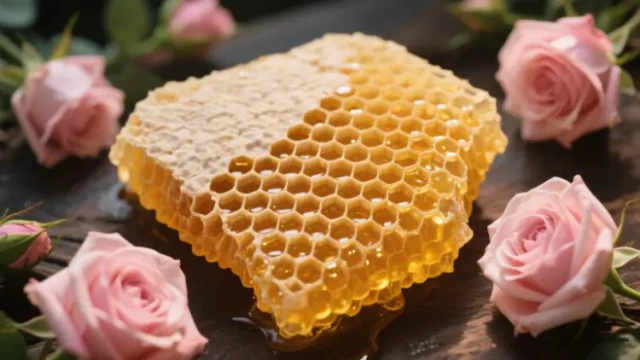Чистота вашей медогонки — это не только долговечность оборудования, но и защита чистоты вашего меда и здоровья ваших пчел. Это руководство охватывает проверенные методы удаления воска, прополиса и остатков без использования агрессивных химикатов или механических повреждений, разработанные для коммерческих пчеловодов и дистрибьюторов, которые ставят во главу угла эффективность и устойчивость.
Лучшие практики чистки медогонки
Начните с правильного подхода: Самая безопасная чистка начинается с понимания материала вашей медогонки (обычно нержавеющая сталь или пищевой пластик) и природы остатков (липкий воск, прополис или ферментированный мед).
Ключевые шаги:
-
Предварительный осмотр
- Проверьте на наличие трещин или ржавчины, где могут скрываться бактерии.
- Удалите крупный мусор вручную, чтобы избежать засорения сливных отверстий или повреждения механических частей.
-
Температура имеет значение
- Теплая вода (не кипяток) размягчает воск, не деформируя металл или пластик.
- Холодная вода затвердевает остатки, затрудняя их удаление.
-
Экологичные чистящие инструменты
- Используйте нейлоновые щетки или мягкие ткани, чтобы предотвратить появление царапин.
- Избегайте стальной ваты на нержавеющей стали, чтобы предотвратить микроцарапины, в которых могут скапливаться бактерии.
Почему это работает: Исследования показывают, что щадящая чистка с использованием тепла снижает образование биопленок более чем на 60% по сравнению с агрессивной чисткой.
Натуральные методы: Баланс эффективности и поведения пчел
Пчелы чувствительны к химическим следам, поэтому натуральные чистящие средства сохраняют здоровье колонии, соблюдая стандарты безопасности пищевых продуктов.
Лучшие решения:
- Уксус и вода (соотношение 1:3): Растворяет минеральные отложения и легкий налет воска. Замочите детали на 20–30 минут перед промывкой.
- Паста из пищевой соды: Удаляет стойкий прополис без абразивного воздействия. Идеально подходит для прокладок и швов.
- Паровая чистка: Уничтожает патогены без химикатов. Коммерческие пасеки сообщают о более быстром времени сушки и отсутствии риска остатков.
Совет для пчел: Избегайте эфирных масел (например, чайного дерева, эвкалипта) — они могут нарушить коммуникацию пчел.
Механическая чистка: Максимальная мощность без повреждения деталей
Для крупномасштабных операций механические системы экономят время, но требуют осторожности.
Безопасные практики:
- Мойки высокого давления: Используйте давление до 1200 фунтов на квадратный дюйм и насадки с широким углом распыления, чтобы избежать деформации тонких рамок.
- Ультразвуковые очистители: Эффективны для мелких деталей, таких как клапаны, сокращая трудозатраты примерно на 40%.
- Автоматические распылительные штанги: Установите регулируемые форсунки для равномерного покрытия всех поверхностей.
Критическое напоминание: Всегда разбирайте движущиеся части (например, шестерни) перед механической чисткой, чтобы предотвратить смещение.
Протоколы после чистки: Санитарная обработка и хранение
Чистая медогонка все еще может стать источником микробов при неправильном хранении.
Санитарная обработка:
- Пищевые дезинфицирующие средства: Перекись водорода (3%) или спреи с лимонной кислотой убивают бактерии без необходимости промывки.
- Сушка на воздухе: Разместите детали на стеллажах под солнечным светом — ультрафиолетовые лучи естественно дезинфицируют.
Хранение:
- Контроль климата: Храните в сухих помещениях, чтобы предотвратить появление плесени.
- Защитные чехлы от пчел: Используйте дышащую ткань для защиты от вредителей, обеспечивая при этом циркуляцию воздуха.
Профессиональный совет: Пасеки, которые применяют эти меры, сокращают замену оборудования на 30% за пять лет.
Сохраните чистоту меда и долговечность оборудования с HONESTBEE
Коммерческие пчеловоды доверяют оптовым поставкам HONESTBEE — от экологически чистых чистящих средств до безопасных для пчел решений для хранения — для защиты своего урожая и инвестиций. Изучите наш тщательно подобранный ассортимент сегодня и оптимизируйте процесс чистки без компромиссов.
Заключительная мысль: Правильный метод чистки — это не просто техническое обслуживание; это обязательство перед пчелами и потребителями, которые полагаются на качество вашего меда.
Визуальное руководство

Связанные товары
- 6 рамка ручной нержавеющей стали мед экстрактор пчеловодства оборудование
- HONESTBEE 72 рамка промышленный электрический экстрактор меда для пчеловодства
- HONESTBEE 6 рамок три использования электрический экстрактор меда для пчеловодства
- Пластиковая ручная рукоятка 2 рамки экстрактор меда низкая цена
- 2 рамка из нержавеющей стали ручной мед спиннер экстрактор для пчеловодства
Связанные статьи
- Физика идеального урожая: почему медогонка — чудо эффективности
- Руководство по успешной добыче меда и его пользе
- Руководство по выбору лучшего экстрактора меда для пчеловодства
- Тангенциальные и радиальные экстракторы меда: Как выбрать для ваших потребностей в пчеловодстве
- Как эффективно собирать мед, сохраняя здоровье пчел




















